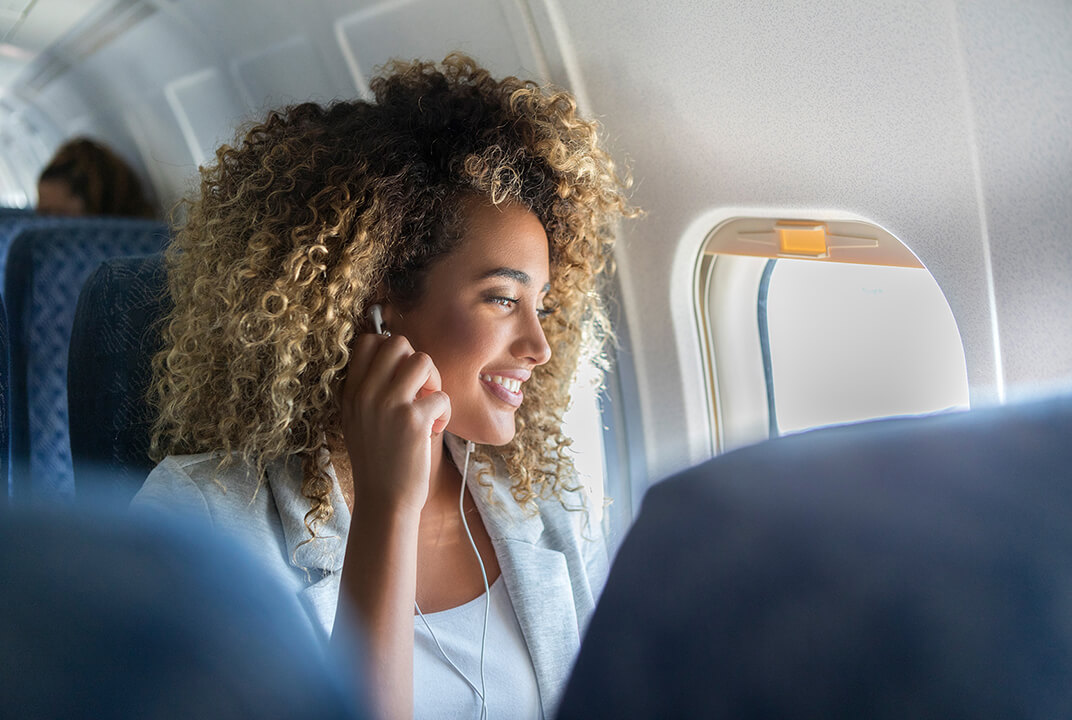Insight | We want to be a digital company that flies aircraft
We want to be a digital company that flies aircraft
Aviation
Avianca’s CEO outlines his airline’s connected future.
As bold statements go, the above claim made by Avianca CEO Hernan Rincon in 2017 was certainly eye-catching. There was a time when airlines were seen as steadfast and risk-averse businesses – with good reason.
But in the last few years, the industry has shifted gears. Powered by the digital revolution that has transformed every part of our lives, some airlines have wholeheartedly embraced the opportunities offered by digital innovation, as Rincon’s ambitious goal shows.
And he’s well-placed to see the way the wind is blowing. Before being named CEO and Executive President of Avianca Holdings in 2016, he was Microsoft’s President of the Latin America region. As he told CAPA’s Peter Harbison in a conversation discussing the ‘Strategy, Focus and Future of Avianca’, at CAPA’s Latin America Aviation Summit in September 2017, his previous role gives him experience of driving digital transformation.
“I come from the digital world,” he commented. “Microsoft helped other customers with the technology to improve their operations, their customer service and the way they ran their company. [Avianca’s] board of directors thought that experience was a good reason for hiring me.”
"We can turn around the experience of our passengers using technology"
Rincon concedes that the airline – the second oldest in the world (behind KLM), which celebrates its 100th birthday in 2019 – was perhaps a little slow to adopt its visionary digital strategy and invest in the necessary infrastructure, but it’s catching up quickly.
“We’re moving fast,” he told Harbison. “And we think we can turn around the experience of our passengers using technology.”
Hence the 2017 announcement that Avianca had adopted Inmarsat’s revolutionary high-speed broadband service, GX Aviation, for its Airbus A320 family, A330 and Boeing 787 fleets.
Raymundo Villar, Inmarsat’s Vice President of Aviation in the Americas, hailed the landmark deal at the time, noting that the agreement between Avianca and Inmarsat gave the latter its first “toe-hold in the Americas”. A year on, and he remains enthusiastic about the forthcoming commercial launch. In particular, Rincon’s ‘digital company that flies aircraft’ approach.
“Inmarsat is 100% aligned with Avianca’s digital strategy,” Villar explains. “This is good news for both companies because it means that we have the passenger in mind from the same framework and with the same objective. That is, to enhance the passenger experience and bring a digital environment well-regarded by tech-savvy users.”
Of course, delivering confident rhetoric might be newsworthy, but what does a ‘digital company that flies aircraft’ mean in reality? Speaking at the 2018 AIX conference in Hamburg, Maria Paula Duque, Avianca’s Senior Vice President of Strategic Relations and Customer Experience, conceded the aim of digital transformation was a challenge, but one Avianca was meeting head on.
"We need to believe, think and design for digital"
“You have to understand that people nowadays live in a digital world,” she said. “They need to be connected 24 hours a day. Working 24 hours, arranging their lives, their kids, their work, their travel, their everything. And we’re just part of a journey across that 24 hours. So we need to adapt our system, our back office, our customer experience to make it easier for our customers to live the process of travel without being disconnected.”
Inflight connectivity is central to this, according to Duque. Her dream for Avianca passengers is a seamless journey from house to hotel and from one plane to another.
“If you have the connectivity,” she points out, “I should be able to send you an alert saying this is your flight, this is what is happening, select your seat, find the gate and get there without any paper.”
She continues: “To achieve the expectations of our customers in the digital journey map, you need to believe, think and design for digital. We need our processes to be born digitally. And if you believe that is true, then you need to have connectivity on board.”
For Duque, having inflight connectivity demonstrates to the modern passenger that you understand their needs and that you’re one step ahead. IFC might not be the only factor that they consider when choosing an airline, but in 2018 customers expect that standard of service.
“Having it (IFC) is critical for keeping your customers with you,” she says, “and not lose them to your competition. It also enables you to improve and leverage the experience they have on board.”
In her estimation, connectivity is not just about competitive advantage. It’s more than that.
“Connectivity is a gift the customer expects from you,” she explains. “You may say now that it gives a competitive advantage, but in one year or two years it’s going to be a given.”
That’s why Latin American’s oldest airline has chosen to work with Inmarsat. Avianca wanted a partnership, and Inmarsat was the perfect fit.
“We are trying to change the way we work with vendors,” she notes. “Inmarsat seemed to us to be more of a partner than a vendor. And that’s critical for the development of new products. If you want to innovate, if you want to become a digital company, if you want to get ahead, you want someone who is a real partner. Someone that will bring ideas to the table.
And Inmarsat is going to design the service, the prices, the offering. They have the customer interface. The expertise of Inmarsat is broadband. Ours is to take people safely from country to another. So that partnership really provides us with new ideas, with new benchmarks, with really competitive insights that help Avianca reach its vision of becoming a digital airline.”
It’s a view echoed by Raymundo Villar. Having opened conversations with Avianca in 2015, he’s looking forward to the commercial launch and confirms that conversations between Inmarsat and Avianca occur daily, in order to maintain momentum.
"Connectivity is a gift the customer expects from you"
One team, involving Inmarsat partner and IFE specialists, Zodiac Inflight Innovations, is working with Avianca’s engineering and maintenance division to ensure the certification path is aligned for proper implementation. Meanwhile, another team is heavily engaged with Avianca’s passenger experience and marketing teams to prepare the connectivity product for passenger use.
Villar adds that the certification path has been a challenge, because it involves several entities, from the aircraft manufacturer to the hardware provider, the airline, and the integrator. Despite this, he’s confident that Inmarsat has provided an end product that will exceed expectations for Avianca and, most importantly, for its customers who will be paying for the service.
“Avianca will bring a new level of passenger experience,” Villar says. “And this will translate to higher satisfaction on a service that is being demanded by the market. Along with this, we are working with the airline in order to monetise this service and maximise the ancillary revenues that Avianca can bring.”
Back at Avianca the final word goes, fittingly, to Hernan Rincon. In that illuminating conversation with Peter Harbison in 2017, he said that this push for digitalisation and connectivity was driven by two goals – an improved customer experience and increased productivity within Avianca.
“That’s the only criteria,” he stated. “Everything else is just noise.”
Clearly, Avianca is cutting through that noise and leading the way for Latin America’s aviation connectivity revolution.
"Avianca will bring a new level of passenger experience"


